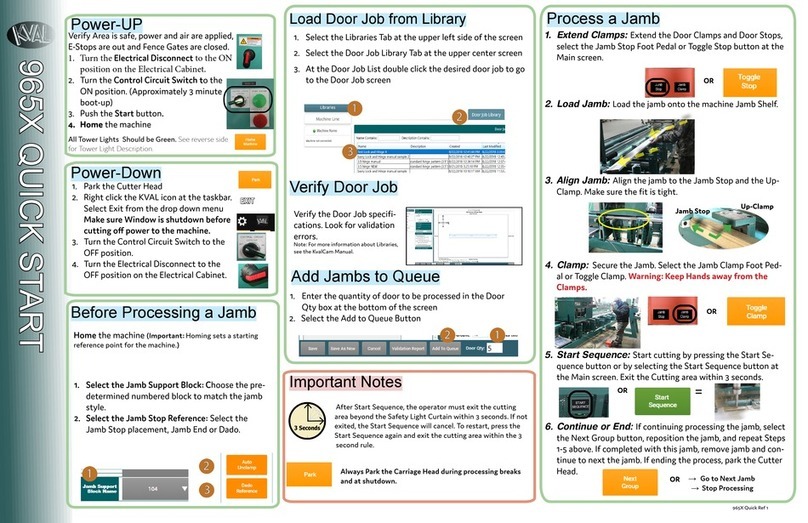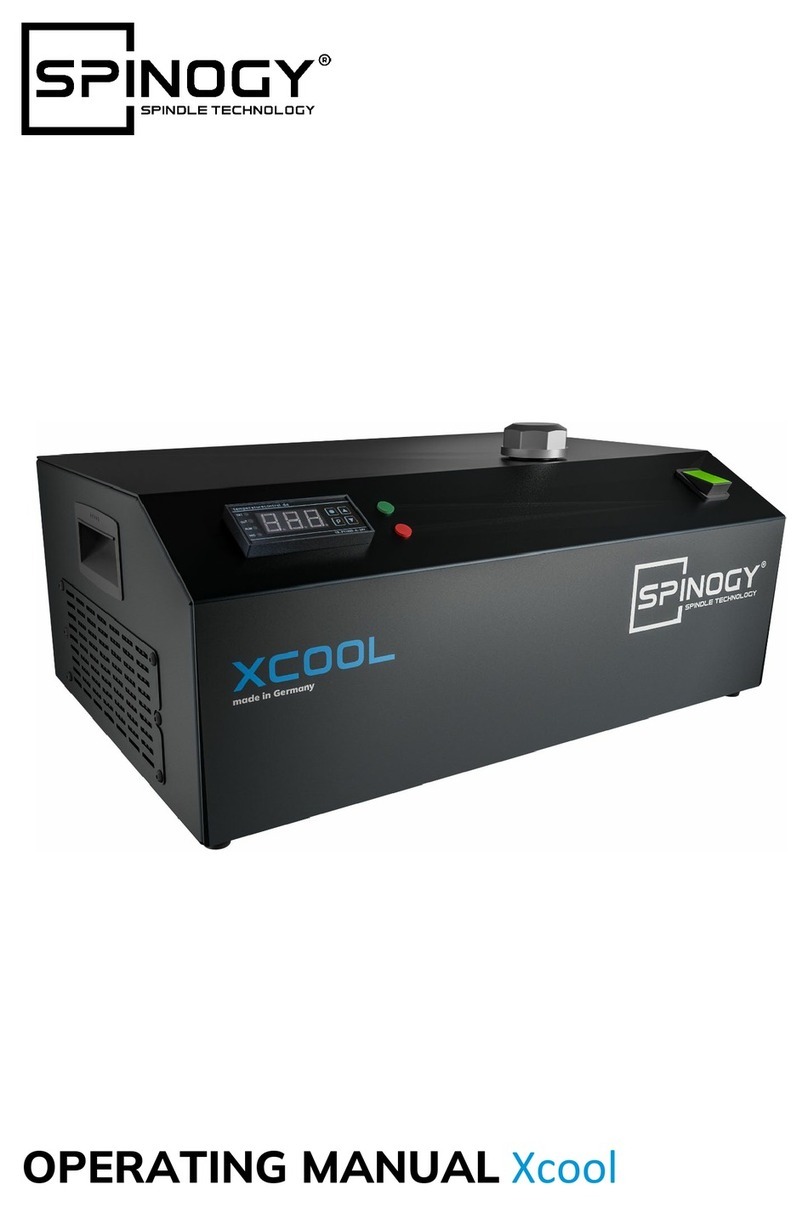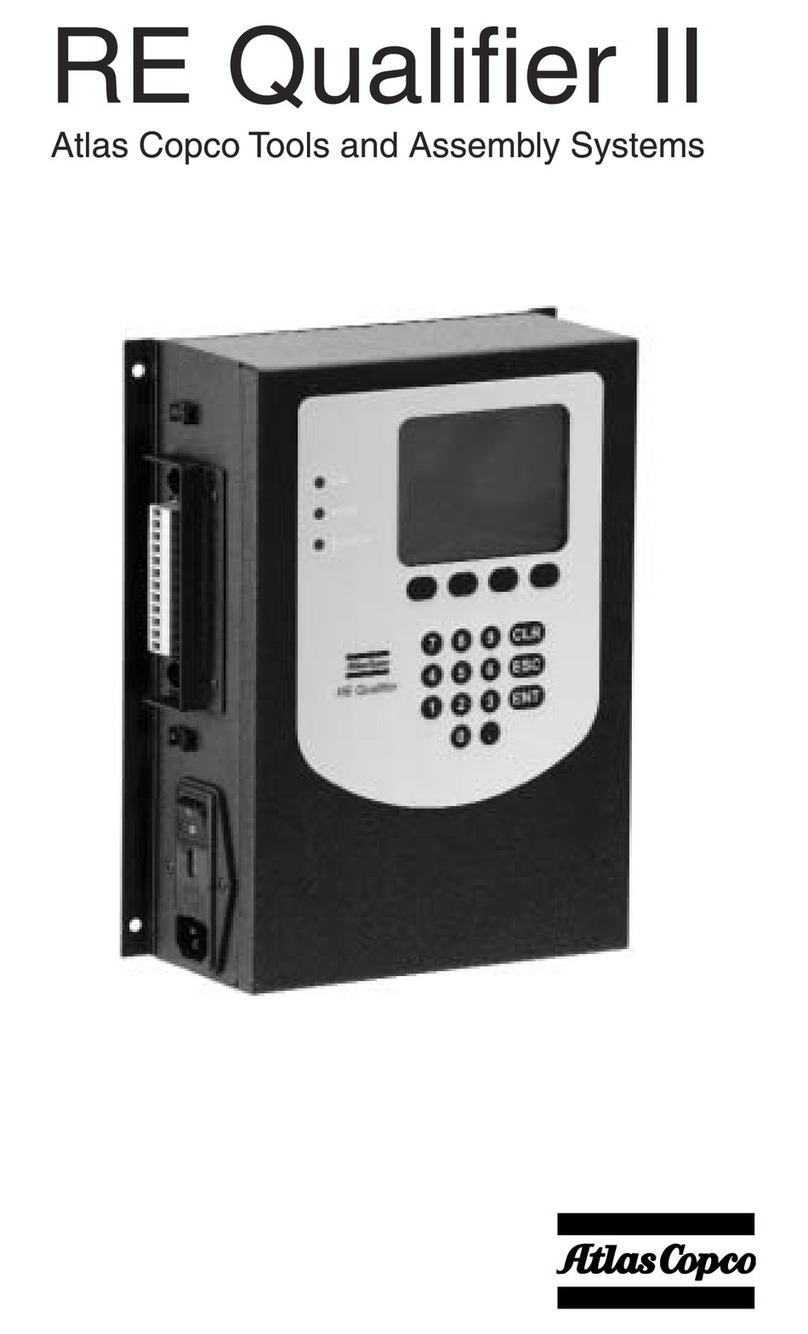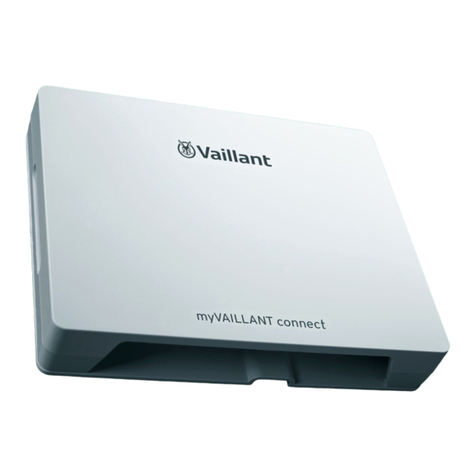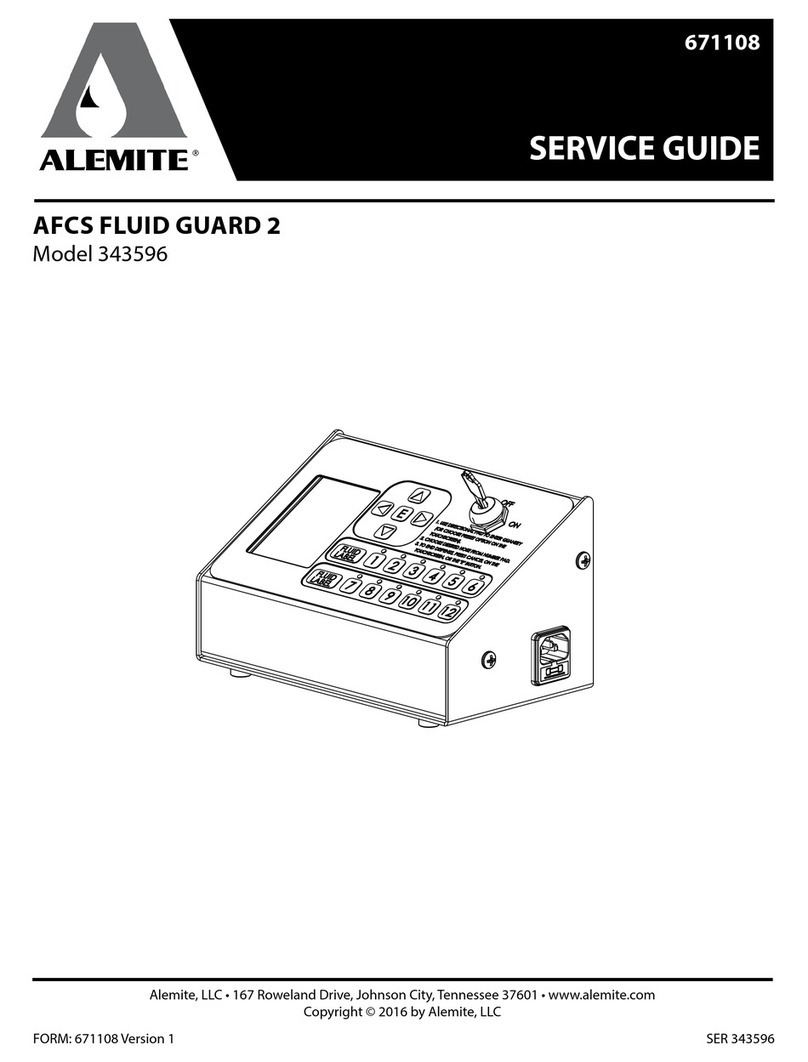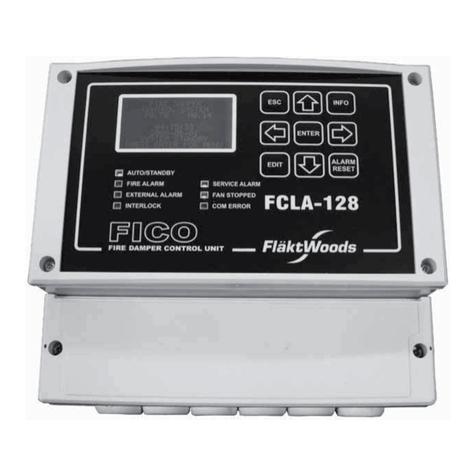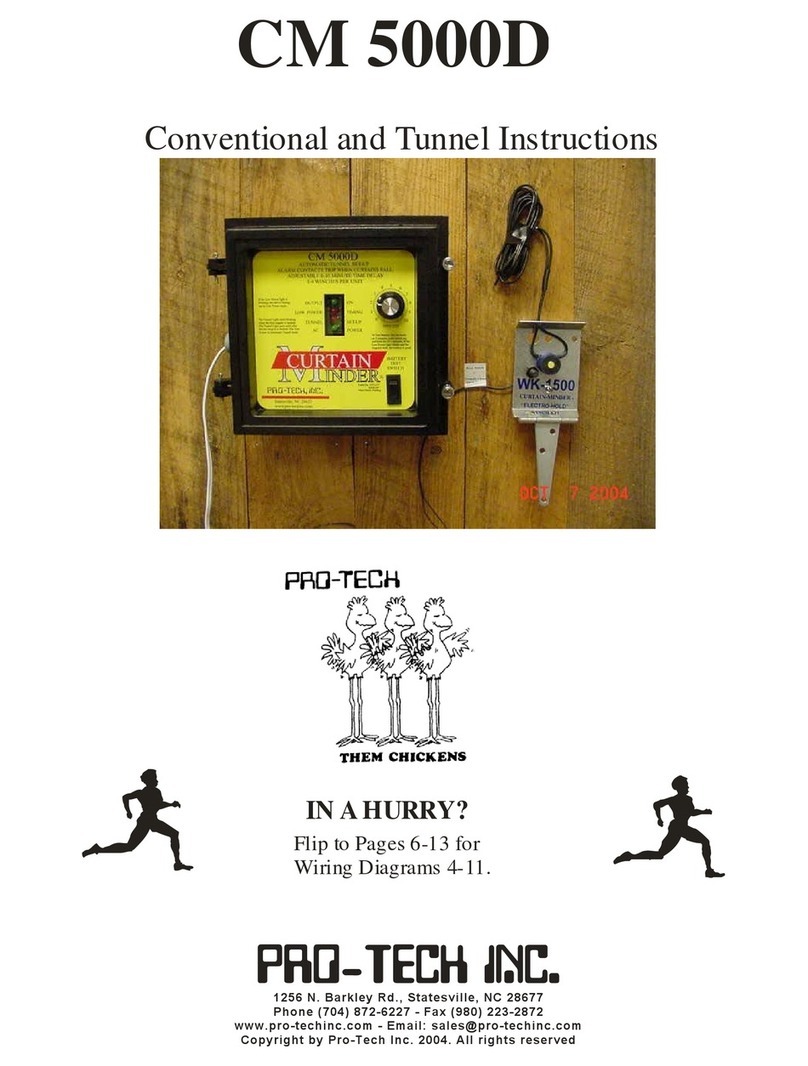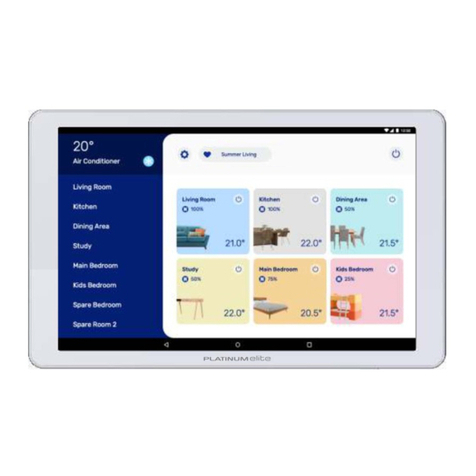HIMA HIMax User guide

SYSTEM
HIMax®
System Manual

HI 801 001 E Rev. 4.01 (1131)
All HIMA products mentioned in this manual are protected by the HIMA trade-mark. Unless noted
otherwise, this also applies to other manufacturers and their respective products referred to herein.
All of the instructions and technical specifications in this manual have been written with great care and
effective quality assurance measures have been implemented to ensure their validity. For questions,
please contact HIMA directly. HIMA appreciates any suggestion on which information should be
included in the manual.
Equipment subject to change without notice. HIMA also reserves the right to modify the written material
without prior notice.
For further information, refer to the CD-ROM and our website http://www.hima.de and
http://www.hima.com.
© Copyright 2011, HIMA Paul Hildebrandt GmbH + Co KG
All rights reserved
Contact
HIMA Address:
HIMA Paul Hildebrandt GmbH + Co KG
P.O. Box 1261
68777 Brühl
Phone: +49 6202 709-0
Fax: +49 6202 709-107
Type of change
Revision
index
Revisions
technical editorial
4.00 Adjusted to HIMax V4/SILworX V4 X X
4.01 Revised: chapter 3.2, 3.5, 5.2, 9.2 X X

HIMax System Table of Contents
HI 801 001 E Rev. 4.01 Page 3 of 122
Table of Contents
1Introduction ............................................................ 7
1.1 Structure and Use of the Document..................................................................... 7
1.2 Target Audience..................................................................................................... 7
1.3 Formatting Conventions ....................................................................................... 8
1.3.1 Safety Notes ............................................................................................................ 8
1.3.2 Operating Tips ......................................................................................................... 9
2Safety.................................................................... 10
2.1 Intended Use ........................................................................................................ 10
2.1.1 Scope..................................................................................................................... 10
2.1.2 Non-Intended Use.................................................................................................. 10
2.1.3 Operating Requirements........................................................................................ 11
2.1.4 Requirements to be met by the operator and the machine and system
manufacturers........................................................................................................ 13
2.2 Residual Risk ....................................................................................................... 13
2.3 Safety Precautions............................................................................................... 14
2.4 Emergency Information....................................................................................... 14
3Product Description .............................................. 15
3.1 Base Plates and Base Plate Types..................................................................... 16
3.1.1 Base Plate Structure.............................................................................................. 17
3.1.2 Ventilation .............................................................................................................. 18
3.1.3 Monitoring the Temperature................................................................................... 18
3.1.4 Power Supply......................................................................................................... 18
3.2 System Bus .......................................................................................................... 19
3.2.1 System Bus with Line Structure ............................................................................. 21
3.2.2 System Bus with Network Structure....................................................................... 21
3.2.3 Extending the System Bus, System bus Latency .................................................. 24
3.3 Modules and Connector Boards......................................................................... 33
3.3.1 Identifying the Module via SRS.............................................................................. 33
3.3.2 Permissible Slot Assignments................................................................................ 34
3.4 Processor module................................................................................................ 35
3.4.1 Operating System .................................................................................................. 35
3.4.2 Behavior in the Event of Faults .............................................................................. 37
3.5 Noise Blanking ..................................................................................................... 37
3.5.1 Impact of Noise Blanking ....................................................................................... 37
3.5.2 Configuring Noise Blanking.................................................................................... 38
3.5.3 Noise Blanking Sequence...................................................................................... 39
3.5.4 Considering the Effective Direction........................................................................ 41
3.6 Alarm and Sequence of Events Recording ....................................................... 42
3.6.1 Alarm and Events................................................................................................... 42
3.6.2 Creating Events ..................................................................................................... 42
3.6.3 Recording Events................................................................................................... 43
3.6.4 Transfer of Events.................................................................................................. 43

Table of Contents HIMax System
HI 801 001 E Rev. 4.01 Page 4 of 122
3.7 Communication ....................................................................................................44
3.8 Communication with the Programming and Debugging Tool..........................44
3.9 Licensing...............................................................................................................45
4Redundancy .......................................................... 46
4.1 Processor Module ................................................................................................ 46
4.1.1 Decreasing Redundancy ........................................................................................ 46
4.1.2 Upgrading Redundancy..........................................................................................46
4.2 I/O Modules ...........................................................................................................46
4.2.1 Module Redundancy .............................................................................................. 46
4.2.2 Channel Redundancy............................................................................................. 47
4.2.3 Connector Boards for Redundant Modules ............................................................47
4.3 System Bus........................................................................................................... 47
4.4 Communication ....................................................................................................47
4.4.1 safeethernet ..........................................................................................................47
4.4.2 Standard Protocols................................................................................................. 47
4.5 Power Supply........................................................................................................ 47
5Programming......................................................... 49
5.1 Connecting the Programming System ...............................................................49
5.2 Using Variables in a Project ................................................................................49
5.2.1 Types of Variables..................................................................................................49
5.2.2 Initial Value.............................................................................................................50
5.2.3 System Variables and System Parameters............................................................ 50
5.2.4 Assignment to I/O Channels...................................................................................61
5.2.5 Assignment to Communication Connections..........................................................63
5.2.6 Configuring the Sequence of Events Recording ....................................................63
5.3 Forcing ..................................................................................................................66
5.3.1 Time Limits .............................................................................................................66
5.3.2 Restricting the Use of Forcing ................................................................................ 67
5.3.3 Force Editor............................................................................................................67
5.3.4 Forcing and Scalar Events .....................................................................................67
5.4 Multitasking ..........................................................................................................68
5.4.1 Multitasking Mode ..................................................................................................71
5.5 Loading User Programs....................................................................................... 75
5.5.1 Download ...............................................................................................................75
5.5.2 Reload ....................................................................................................................75
5.6 Loading Operating Systems................................................................................ 78
5.6.1 Load Process ......................................................................................................... 78
5.6.2 Updating and Downgrading Operating Systems .................................................... 79
6User Management .................................................. 80
6.1 User Management for SILworX Projects ............................................................ 80
6.2 User Management for the Controller .................................................................. 80
6.2.1 Default User ...........................................................................................................81
6.2.2 Parameters for User Accounts ...............................................................................82

HIMax System Table of Contents
HI 801 001 E Rev. 4.01 Page 5 of 122
6.2.3 Setting Up User Accounts...................................................................................... 82
7Diagnosis .............................................................. 83
7.1 Light Emitting Diodes.......................................................................................... 83
7.1.1 Definition of Blinking Frequencies.......................................................................... 83
7.1.2 Module Status Indicators ....................................................................................... 84
7.1.3 Redundancy Indicators .......................................................................................... 84
7.1.4 System Bus Indicators ........................................................................................... 85
7.1.5 Rack Connection Indicators................................................................................... 85
7.1.6 Slot Indicators ........................................................................................................ 85
7.1.7 Maintenance Indicators.......................................................................................... 86
7.1.8 Fault Indicators ...................................................................................................... 86
7.1.9 I/O Indicators.......................................................................................................... 87
7.1.10 Fieldbus Indicators................................................................................................. 87
7.1.11 Ethernet Indicators................................................................................................. 88
7.1.12 Ethernet Indicators X-SB Module........................................................................... 88
7.2 Diagnostic History ............................................................................................... 89
7.3 Online Diagnosis.................................................................................................. 89
8Specifications, Dimensioning ................................ 91
9Lifecycle ............................................................... 92
9.1 Installation ............................................................................................................ 92
9.1.1 Mechanical Structure ............................................................................................. 92
9.1.2 Connecting the Field Zone to the I/O Module ........................................................ 92
9.1.3 Earthing.................................................................................................................. 96
9.1.4 Electrical Connections ......................................................................................... 101
9.1.5 Mounting a Connector Board ............................................................................... 103
9.1.6 Considerations about Heat .................................................................................. 104
9.2 Start-Up............................................................................................................... 106
9.2.1 Starting-up the Control Cabinet ........................................................................... 107
9.2.2 Starting-up the PES ............................................................................................. 107
9.2.3 Assigning the Rack ID.......................................................................................... 109
9.2.4 Switching Between Line and Network Structure .................................................. 109
9.3 Maintenance and Repairs.................................................................................. 110
9.3.1 Disturbances........................................................................................................ 111
9.3.2 Connecting the Power Supply after a Service Interruption .................................. 111
9.3.3 Connecting the redundant Power Supply ............................................................ 111
9.3.4 Repair .................................................................................................................. 112
10 HIMax Documentation and Support.......................113
10.1 HIMax Documentation ....................................................................................... 113
10.2 HIMA Service, Training and Hotline ................................................................. 114
Appendix..............................................................115
Application Examples........................................................................................ 115
Glossary.............................................................................................................. 117

Table of Contents HIMax System
HI 801 001 E Rev. 4.01 Page 6 of 122
Index of Figures.................................................................................................. 118
Index of Tables ...................................................................................................119
Index ....................................................................................................................121

HIMax System 1 Introduction
HI 801 001 E Rev. 4.01 Page 7 of 122
1 Introduction
The System Manual describes the configuration and mode of operation of the safety-related
HIMax controller system.
HIMax can be used for various control tasks within the process and factory automation
industry.
1.1 Structure and Use of the Document
This System Manual is composed of the following chapters:
Safety Information on how to safely use the HIMax system
Product Description Structure of the HIMax systems
Communication Brief description of the communication between the HIMax and
other systems. For more information, refer to the Communication
Manual HI 801 101 E.
Redundancy Options for increasing availability
Programming Important instructions on how to create a user program
User Management User management for accessing to the HIMax controllers
Diagnosis Summary of the diagnostic options
Specifications, Dimen-
sioning
Data related to the entire system. Data concerning the individual
components are specified in the corresponding manual
Lifecycle Phases of one HIMax system lifecycle
Installation
Start-up
Service and maintenance
HIMax Documentation
and Support
Overview of the documentation and on how to get access to the
support
Appendix Configuration examples for the HIMax systems
Glossary
Index of tables and index of figures
Index
1.2 Target Audience
This document addresses system planners, configuration engineers, programmers of
automation devices and personnel authorized to implement, operate and maintain the
devices and systems. Specialized knowledge of safety-related automation systems is
required.
All staff members (planning, installation, commissioning) must be informed about the risks
and potential consequences resulting from the manipulation of a safety-related automation
system.
Planners and configuration engineers must have additional knowledge about the selection
and use of electrical and electronic safety systems within automated systems, e.g., to
prevent improper connections or faulty programming.
The operator is responsible for qualifying the operating and maintenance personnel and
providing them with appropriate safety instructions.
Only staff members with knowledge of industrial process measurement and control,
electrical engineering, electronics and the implementation of PES and ESD protective
measures may modify or extend the system wiring.

1 Introduction HIMax System
HI 801 001 E Rev. 4.01 Page 8 of 122
1.3 Formatting Conventions
To ensure improved readability and comprehensibility, the following fonts are used in this
document:
Bold: To highlight important parts
Names of buttons, menu functions and tabs that can be clicked and
used in SILworX.
Italics: System parameter and variables
Courier Literal user inputs
RUN Operating state are designated by capitals
Chapter 1.2.3 Cross references are hyperlinks even though they are not particu-
larly marked. When the cursor hovers over a hyperlink, it changes its
shape. Click the hyperlink to jump to the corresponding position.
Safety notes and operating tips are particularly marked.
1.3.1 Safety Notes
The safety notes are represented as described below.
These notes must absolutely be observed to reduce the risk to a minimum. The content is
structured as follows:
Signal word: danger, warning, caution, notice
Type and source of danger
Consequences arising from the danger
Danger prevention
The signal words have the following meanings:
Danger indicates hazardous situation which, if not avoided, will result in death or serious
injury.
Warning indicates hazardous situation which, if not avoided, could result in death or se-
rious injury.
Warning indicates hazardous situation which, if not avoided, could result in minor or
modest injury.
Notice indicates a hazardous situation which, if not avoided, could result in property
damage.
NOTICE
Type and source of damage!
Damage prevention
SIGNAL WORD
Type and source of danger!
Consequences arising from the danger
Danger prevention

HIMax System 1 Introduction
HI 801 001 E Rev. 4.01 Page 9 of 122
1.3.2 Operating Tips
Additional information is structured as presented in the following example:
iThe text corresponding to the additional information is located here.
Useful tips and tricks appear as follows:
TIP The tip text is located here.

2 Safety HIMax System
HI 801 001 E Rev. 4.01 Page 10 of 122
2 Safety
All safety information, notes and instructions specified in this document must be strictly
observed. The product may only be used if all guidelines and safety instructions are
adhered to.
This product is operated with SELV or PELV. No imminent danger results from the product
itself. The use in Ex-Zone is permitted if additional measures are taken.
2.1 Intended Use
This chapter describes the conditions for using HIMax systems.
2.1.1 Scope
The safety-related HIMax controllers are certified for use in process controllers, protective
systems, burner systems and machine controllers.
All HIMax input and output modules (I/O modules) can be operated with an individual
processor module or with several redundant processor modules.
When implementing safety-related communications between various devices, ensure that
the overall response time does not exceed the fault tolerance time. All calculations must be
performed in accordance with the rules specified in Safety Manual HI 800 003 E.
Only connect devices with safe electrical isolation to the communications interfaces.
Application in accordance with the 'De-Energize to Trip Principle'
The automation devices have been designed in accordance with the 'de-energize to trip'
principle.
A system that operates in accordance with the 'de-energize to trip principle' does not
require any power to perform its safety function.
Thus, if a fault occurs, the input and output signals adopt a de-energized, safe state.
Application in accordance with the 'Energize to Trip Principle'
The HIMax controllers can be used in applications that operate in accordance with the
'energize to trip' principle.
A system operating in accordance with the 'energize to trip' principle requires power (such
as electrical or pneumatic power) to perform its safety function.
When designing the controller system, the requirements specified in the application
standards must be taken into account. For instance, line diagnosis for the inputs and
outputs may be required
Use in Fire Alarm Systems
All HIMax systems with analog inputs are tested and certified for used in fire alarm systems
in accordance with DIN EN 54-2 and NFPA 72. To contain the hazard, these systems must
be able to adopt an active state on demand.
The operating requirements must be observed!
2.1.2 Non-Intended Use
The transfer of safety-relevant data through public networks like the Internet is not
permitted unless additional security measures such as VPN tunnel or firewall have been
implemented to increase security.
With fieldbus interfaces, no safety-related communication can be ensured.
The use under environmental conditions other than those specified in the following section
is not permitted.

HIMax System 2 Safety
HI 801 001 E Rev. 4.01 Page 11 of 122
2.1.3 Operating Requirements
The devices have been developed to meet the following standards for EMC, climatic and
environmental requirements:
Standard Content
IEC/EN 61131-2 Programmable controllers, Part 2
Equipment requirements and tests
IEC/EN 61000-6-2 EMC
Generic standards, Parts 6-2
Immunity for industrial environments
IEC/EN 61000-6-4 Electromagnetic Compatibility (EMC)
Generic emission standard, industrial environments
Table 1: Standards for EMC, Climatic and Environmental Requirements
When using the safety-related HIMax control systems, the following general requirements
must be met:
Requirement type Requirement content
Protection class Protection class II in accordance with IEC/EN 61131-2
Pollution Pollution degree II in accordance with IEC/EN 61131-2
Altitude < 2000 m
Housing Standard: IP20/IP00
If required by the relevant application standards (e.g., EN 60204),
the device must be installed in an enclosure of the specified protec-
tion class (e.g., IP54).
Table 2: General requirements
Climatic Requirements
The following table lists the key tests and thresholds for climatic requirements:
IEC/EN 61131-2 Climatic tests
Operating temperature: 0...+60 °C
(test limits: -10...+70 °C)
Storage temperature: -40...+85 °C
Dry heat and cold resistance tests:
+70 °C / -25 °C, 96 h, power supply not connected
Temperature change, resistance and immunity test:
-25 °C / +70 °C und 0 °C / +55 °C,
power supply not connected
Cyclic damp-heat withstand tests:
+25 °C / +55 °C, 95 % relative humidity,
power supply not connected
Table 3: Climatic Requirements
Mechanical Requirements
The following table lists the key tests and thresholds for mechanical requirements:
IEC/EN 61131-2 Mechanical tests
Vibration immunity test:
5...9 Hz / 3.5 mm amplitude
9...150 Hz, 1 g, EUT in operation, 10 cycles per axis
Shock immunity test:
15 g, 11 ms, EUT in operation, 3 shocks per axis and direction (18
shocks)
Table 4: Mechanical Tests

2 Safety HIMax System
HI 801 001 E Rev. 4.01 Page 12 of 122
EMC Requirements
Higher interference levels are required for safety-related systems. HIMax systems meet
these requirements in accordance with IEC 62061 and IEC 61326-3-1.
See column 'Criterion FS' (Functional Safety).
Test standards Interference immunity tests Criterion
FS
IEC/EN 61000-4-2 ESD test: 6 kV contact, 8 kV air discharge 6 kV, 8 kV
IEC/EN 61000-4-3 RFI test (10 V/m): 80 MHz...2 GHz, 80 % AM
RFI test (3 V/m): 2 GHz...3 GHz, 80 % AM
RFI test (20 V/m): 80 MHz...1 GHz, 80 % AM
-
-
20 V/m
IEC/EN 61000-4-4 Burst test
Power lines: 2 kV and 4 kV
Signal lines: 2 kV
4 kV
2 kV
IEC/EN 61000-4-12 Damped oscillatory wave test
2.5 kV L-,L+ / PE
1 kV L+ / L -
-
-
IEC/EN 61000-4-6 High frequency, asymmetrical
10 V, 150 kHz...80 MHz, 80 % AM
20 V, ISM frequencies, 80 % AM
10 V
-
IEC/EN 61000-4-3 900 MHz pulses -
IEC/EN 61000-4-5 Surge:
Power lines: 2 kV CM, 1 kV DM
Signal lines: 2 kV CM, 1 kV DM at AC I/O
2 kV / 1 kV
2 kV
Table 5: Interference Immunity Tests
IEC/EN 61000-6-4 Noise emission tests
EN 55011
Class A
Emission test:
radiated, conducted
Table 6: Noise Emission Tests

HIMax System 2 Safety
HI 801 001 E Rev. 4.01 Page 13 of 122
Power Supply
The following table lists the key tests and thresholds for the device's power supply:
IEC/EN 61131-2 Review of the DC supply characteristics
Alternatively, the power supply must comply with the following stan-
dards:
IEC/EN 61131-2 or
SELV (Safety Extra Low Voltage) or
PELV (Protective Extra Low Voltage)
HIMax devices must be fuse protected as specified in this manual
Voltage range test:
24 VDC, -20 %...+25 % (19.2 V...30.0 V)
Momentary external current interruption immunity test:
DC, PS 2: 10 ms
Reversal of DC power supply polarity test:
Refer to corresponding chapter of the system manual or data sheet of
power supply.
Backup duration withstand test:
Test B, 1000 h
Table 7: Review of the DC Supply Characteristics
ESD Protective Measures
Only personnel with knowledge of ESD protective measures may modify or extend the
system or replace a module.
NOTE
Electrostatic discharge can damage the electronic components within the control-
lers!
When performing the work, make sure that the workspace is free of static, and
wear an ESD wrist strap.
If not used, ensure that the module is protected from electrostatic discharge, e.g.,
by storing it in its packaging.
Only personnel with knowledge of ESD protective measures may modify or extend
the system wiring.
2.1.4 Requirements to be met by the operator and the machine and system
manufacturers
The operator and the machine and system manufacturers are responsible for ensuring that
HIMax systems are safely operated in automated systems and plants.
The machine and system manufacturers must validate that the HIMax systems are correctly
programmed.
2.2 Residual Risk
No imminent danger results from a HIMax system itself.
Residual risk may result from:
Faults in the engineering
Faults in the user program
Faults in the wiring

2 Safety HIMax System
HI 801 001 E Rev. 4.01 Page 14 of 122
2.3 Safety Precautions
Observe all local safety requirements and use the protective equipment required on site.
2.4 Emergency Information
A HIMax controller is a part of the safety equipment of a system. If the controller fails, the
system adopts the safe state.
In case of emergency, no action that may prevent the HIMax systems from operating safely
is permitted.

HIMax System 3 Product Description
HI 801 001 E Rev. 4.01 Page 15 of 122
3 Product Description
HIMax is a safety-related control system and is intended for continuous operation and
maximum availability.
HIMax is a modular system. Functions such as processing, input and output, and
communication are distributed on plug-in modules. These modules must be inserted in one
or multiple base plates. A controller specific to the concrete application can be created by
selecting appropriate modules.
Ethernet cables are used to interconnect the base plates.
The controller can be easily adapted to future extensions of the process to be controlled,
e.g., by adding modules or base plates containing modules.
Figure 1 shows the structure of the HIMax system. The figure shows the base plates, both
system busses, the system bus modules, the processor modules and the Connector
Boards of the modules.
To increase availability, HIMax is intended for redundant operation. For more information,
refer to Chapter 3.9.
The system can also be used as mono, non-redundant system. For more information, refer
to Chapter 3.3.2, Variant 1, and Appendix.
In either case, safety-related operation up to SIL 3 is ensured.

3 Product Description HIMax System
HI 801 001 E Rev. 4.01 Page 16 of 122
Figure 1: System Overview
A HIMax system is composed of at least one rack, i.e., rack 0. It has rack ID (e.g., 0) und
contains at least one processor module. All additional racks are extension racks. Among
these, rack 1 may contain one or two processor modules. The remaining racks must
contain no processor modules.
Rack 0 can be extended with up to 15 extension racks. Cables are used to interconnect the
two system busses A and B on all the racks.
3.1 Base Plates and Base Plate Types
HIMax base plates differ in the number of slots.
Each base plate composing a HIMax controller can have 10, 15 or 18 slots.

HIMax System 3 Product Description
HI 801 001 E Rev. 4.01 Page 17 of 122
Base plate types:
With 10 slots: X-BASE PLATE 10 01
for mounting on a flat base, e.g., a mounting plate.
With 15 slots: X-BASE PLATE 15 01
for mounting on a backplane
With 15 slots: X-BASE PLATE 15 02
for 19'' mounting
With 18 slots: X-BASE PLATE 18 01
for mounting on a backplane
A total of one module and one connector board can be plugged in to each slot.
System cables are used to interconnect the base plates.
3.1.1 Base Plate Structure
Hook-in rail with slot number
Backplane Bus
Connector for 24 VDC module power
supply, here slot number 9
Connector for connecting the system
bus to a module, here slot number 9
Guiding Rail for Connector Boards
Backplane with wall flanges or 19’’
mounting flanges
Mounting Rail
Cable Shield Rail
Strain Relief for Supply Line
Clamp Terminal Block
Suppressors for High Voltage Transients
Connector Boards for System Bus Mod-
ules
Figure 2: Base Plate Structure
Both left slots, slot 1 and slot 2, are reserved for system bus modules. The remaining slots
can be used for other modules, but observe the restrictions for positioning processor
modules, see Chapter 3.3.2.

3 Product Description HIMax System
HI 801 001 E Rev. 4.01 Page 18 of 122
Each module has a connector board to which external devices such as sensors, actuators
and other controllers are connected. Both connector boards for the system bus modules
are included within the scope of delivery.
The clamp terminal blocks of the base plate are used to connect the power supply. Two
redundant 24 VDC power supply units can be connected.
3.1.2 Ventilation
A suitable fan rack located above the base plate ensures the ventilation.
The air flows from the fan rack downwards through the modules and through the
connection space located in front of the connector boards. To ensure proper ventilation,
insert blank modules in all the unused slots of the base plate!
NOTE
Controller damage due to overheating!
Overheating can destroy electronic components!
Only operate HIMax systems if ventilation is ensured!
A fan rack with suitable dimensions is available for each base plate type. Depending on the
width, the fan racks are equipped with 2, 3 or 4 fans. For more information, refer to the
X-FAN Manual (HI 801 033 E).
Additional dissipation of the generated hot air must be ensured, see Chapter 9.1.6.
3.1.3 Monitoring the Temperature
The modules monitor their own temperature. Use the SILworX programming tool to display
the temperature level and evaluate it for programming reactions.
Details of configuring the temperature monitoring in chapter 9.1.6 .
3.1.4 Power Supply
The HIMax system requires a power supply of 24 VDC.
The safe electrical isolation of the power supply must be ensured within the 24 V system
supply. Use power supply units of type PELV or SELV only. When used in accordance with
UL regulations, an adjustable power supply unit with a maximum voltage of 150 V and a
maximum performance of 10 kVA is allowed.
The power supply used must have a momentary interruption immunity value of < 10 ms.
HIMA power supply units are appropriately equipped. Before using power supply units from
other manufacturers, ensure their adequate testing.
Two redundant power supply units can be connected.
NOTE
Controller damage due to overvoltage!
Set the power supply unit so that the supply voltage cannot exceed 30 V!

HIMax System 3 Product Description
HI 801 001 E Rev. 4.01 Page 19 of 122
NOTE
Controller damage due to overcurrent!
Protect each base plate pre-fusing it against currents higher than 63 A!
The modules monitor both operating voltages. Use the SILworX programming tool to
display the voltage level and evaluate it for programming reactions.
Estimating the Required Power
Use a rule of thumb to estimate the power required for the power supply.
PTotal = nCPU*35 + nModules*20 + nFans*20 +PExternal
PTotal : Total required power
nCPU: Number of processor modules in use
NModule: Number of modules used without processor modules
nFans: Number of fans in use. Each fan rack contains 2, 3 or 4 fans.
PExternal: Power delivered from the output modules to the connected actuators.
The following reference values are used in this formula:
Power consumption of a HIMax processor module: approx. 35 W
Power consumption of another HIMax module (except for processor module): approx.
20 W
Power consumption of a fan: approx. 20 W
Power consumption of the actuators connected to and supplied by the output modules
The power in watts required for one HIMax system is the result of this rough calculation.
For an exact calculation of the power required, use the power consumption values of the
individual modules as specified in the corresponding manuals. The power consumption
values of the other consumer loads are specified in the corresponding data sheets or
manuals.
3.2 System Bus
The HIMax system operates with two redundant system busses, system bus A and system
bus B.
The system busses run within a base plate. The module is connected with the system
busses by inserting it into the base plate. System busses A and B interconnect the modules
via the system bus modules. The failure of one module does not affect the connections to
remaining modules.
The system bus connection to the modules are electrically isolated from the base plate. An
insulation voltage of at least 1 500 V is ensured between the processor module and each
I/O module.
A system bus module is required to manage a system bus. The system bus module in
slot 1 operates system bus A and the system bus module in slot 2 operates system bus B.
iIf only one system bus module is inserted in the base plate, only one system bus is
available!
If both system bus modules are used to operate the HIMax system, communication runs on
both system busses simultaneously.
If the HIMax system is composed of various base plates, use Ethernet patch cables to
interconnect the system busses on the base plates. These cables must be inserted in the

3 Product Description HIMax System
HI 801 001 E Rev. 4.01 Page 20 of 122
RJ-45 socket located on the connector boards of the system bus modules. System bus A
and system bus B must not be crossed or connected.
It is not allowed to interconnect the system busses of various different HIMax systems!
System bus cable characteristics
Twisted pair Ethernet cables
Cat. 5e or higher for 1 Gbit/s.
RJ-45 connector on both sides.
Industrial standard implementation, e.g., with Harting plugs.
Auto-Crossover allows the use of crossover and straight through cables.
Suitable cables are available from HIMA in standard lengths.
NOTE
System malfunction possible!
The system busses are not normal Ethernet connections. Therefore, the RJ-45 sock-
ets UP and DOWN and DIAG may only be used to connect to HIMax racks.
Do not connect the sockets UP and DOWN and DIAG to local networks or other de-
vices with LAN connection such as the PADT!
Never interconnect or cross system bus A and system bus B!
Operate a system bus in line structure either redundantly or not redundantly for all
racks!
The system bus located between base plates containing CPU modules or responsi-
ble system bus modules must be redundantly connected irrespective of its structure,
network or line.
The system bus can be organized in two different structures:
Line structure
That is the default structure.
Network structure
This structure allows one, if the appropriate network structure exists, to shut down and
replace a base plate during operation, without interrupting the connection to the other
base plates.
Table of contents
Popular Control System manuals by other brands

Teton Grill
Teton Grill Fuel Manager Product installation manual
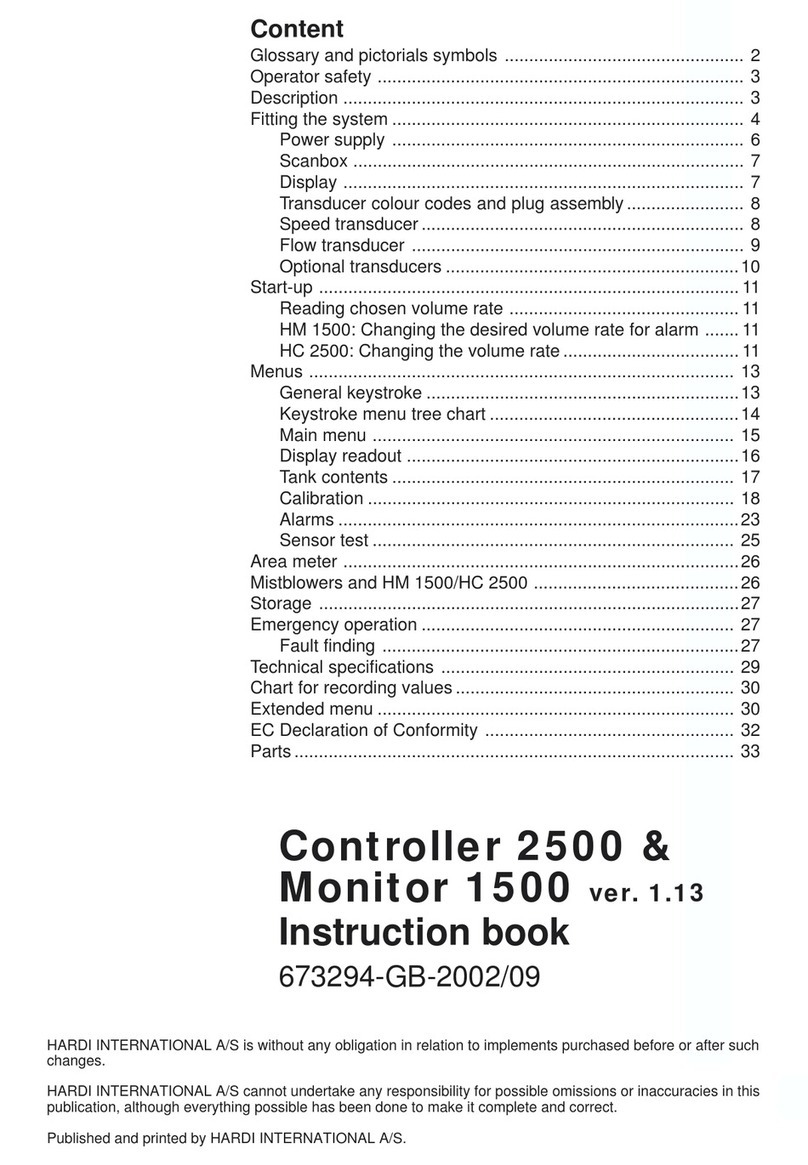
Hardi
Hardi HC 2500 Series Instruction book
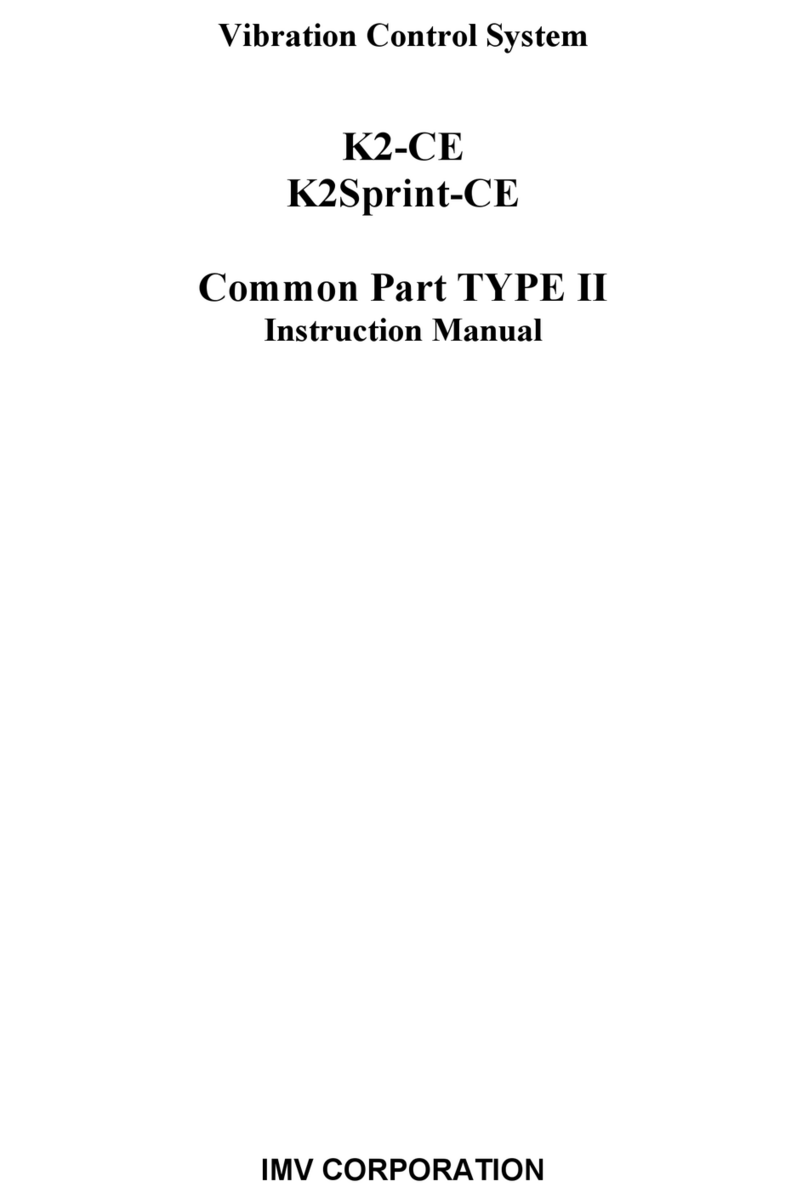
IMV
IMV K2-CE instruction manual
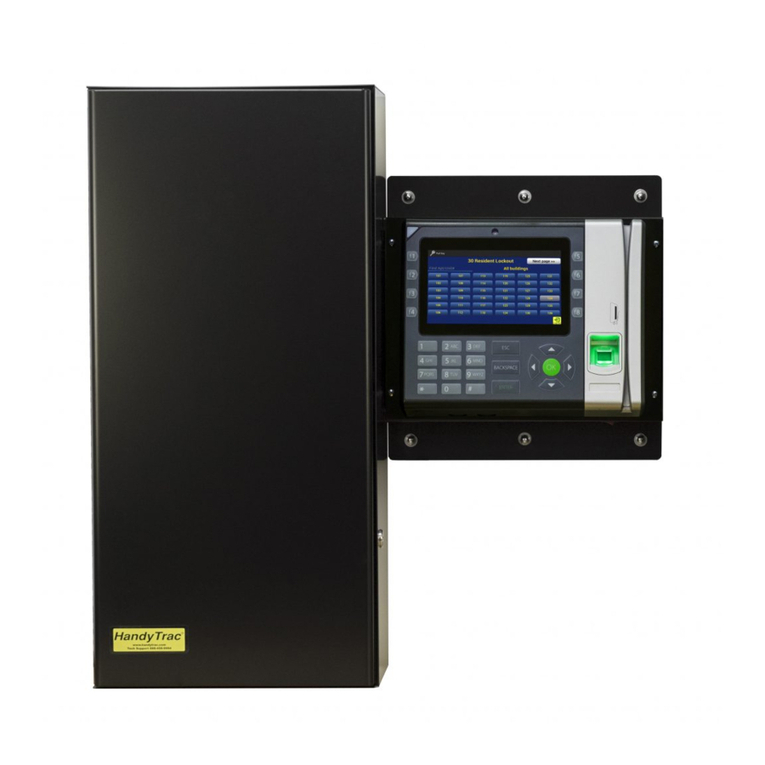
HandyTrac
HandyTrac Key Control System installation & operating manual

HandyTrac
HandyTrac Key Control EASY GUIDE Installation and Operation

DuroZone
DuroZone JTZ-HP manual


